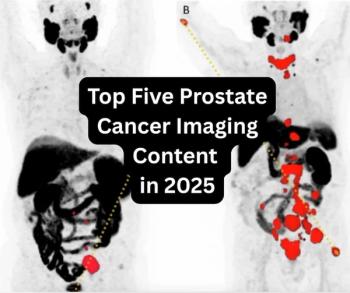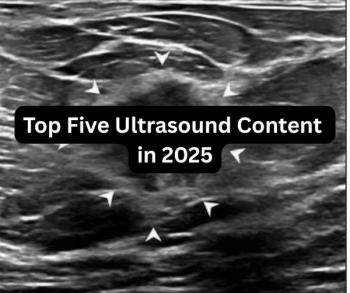
Algorithm for Appendicitis in Children Reduces CT Use
Many CTs for suspected appendicitis among children may be avoided if radiologists use a diagnostic algorithm.
A diagnostic algorithm for suspected appendicitis among children significantly reduces the number of CTs performed, according to an article published in the journal
Researchers from the Mayo Clinic in Rochester, MN evaluated the impact of a diagnostic algorithm on the use of CT in children and the diagnostic accuracy of appendicitis.
A total of 331 patients, aged 18 or younger were identified for the study. The patients had presented to the ER with suspected appendicitis; 41 percent presented in the two years before the algorithm was implemented and 59 percent after implementation.[[{"type":"media","view_mode":"media_crop","fid":"25608","attributes":{"alt":"algorithm","class":"media-image media-image-right","id":"media_crop_8665660039987","media_crop_h":"0","media_crop_image_style":"-1","media_crop_instance":"2366","media_crop_rotate":"0","media_crop_scale_h":"0","media_crop_scale_w":"0","media_crop_w":"0","media_crop_x":"0","media_crop_y":"0","style":"line-height: 1.538em; height: 113px; width: 151px; border-width: 0px; border-style: solid; margin: 1px; float: right;","title":" ","typeof":"foaf:Image"}}]]
The researchers compared the two groups, looking at the clinical characteristics and outcomes, which included the use of CT and negative appendectomy rate.
The findings showed that use of CT for diagnosis or ruling out of appendicitis decreased from 39 percent before the algorithm was implemented to 18 percent after implementation. The negative appendectomy rate increased from 9 percent to 11 percent. “Use of CT did not impact the risk of negative appendectomy,” the authors wrote.
The researchers concluded that the use of CT dropped significantly once a diagnostic algorithm for appendicitis was implemented, without an effect on accuracy.
Newsletter
Stay at the forefront of radiology with the Diagnostic Imaging newsletter, delivering the latest news, clinical insights, and imaging advancements for today’s radiologists.




























